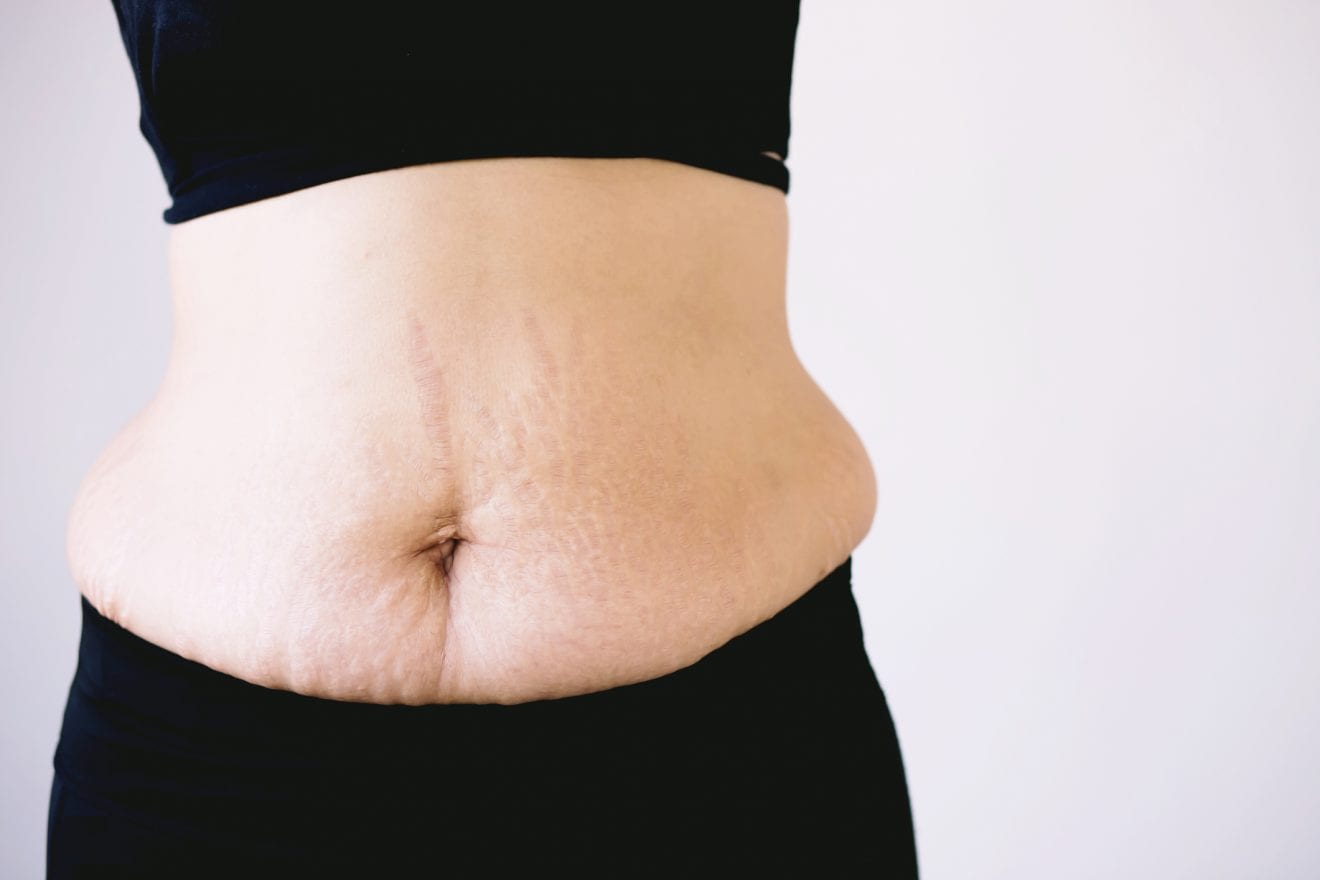Your body undergoes rapid changes during pregnancy to nourish the life growing inside of you. These changes can be exciting and welcomed in anticipation of meeting the newest member of your family. However, after baby comes, you may forget or aren’t prepared for the continued changes and discomforts of what is happening with your postpartum body. These less-than-glamorous aspects of the “fourth trimester” were suppressed and not talked about openly for years. We can all be thankful that we live in an age where we can speak openly about uncomfortable subjects to help us all realize we aren’t alone.
What Is Happening With Your Postpartum Body?
A lot is going on with your postpartum body. Ranging from vaginal bleeding (which, let’s be honest, is not fun) to your boobs continuing to grow, we’ll talk about it all here. I know most of these things can seem confusing or even scary, but what is happening in your postpartum body is normal!
Vaginal Bleeding
Regardless of whether you deliver vaginally or by a C-section, you will experience vaginal bleeding for up to six weeks. The bleeding will be heavier in the first one to two weeks, approximately like a heavy period. You will likely continue to have some amount of bleeding or spotting for up to six weeks postpartum. Sometimes, it is longer if you are breastfeeding exclusively.1,2 Exercise and intercourse can stimulate the bleeding to be slightly more during this time as well.1,3 So, don’t be alarmed if you go a few days without any bleeding and it starts again after exercise.
It is important only to use pads and not tampons in the postpartum period. Tampons can increase your risks of uterine infection or endometritis. If you are having excessive bleeding (passing large clots or using more than a pad an hour), you must alert your provider. Most women resume their regular menstrual cycles at six to eight weeks postpartum or after cessation of breastfeeding.2 Remember that you will ovulate about two weeks before your first cycle.4 Make sure to use birth control if you don’t want a surprise!
Cramping
Immediately after delivery, you can still feel the top or fundus of the uterus up to your belly button.5 In the next six weeks, the uterus will involute (shrink) to its normal size of a fist. It achieves this drastic change in size by contraction of the uterine muscles, also known as cramping.5,6 The cramping will get more and more bearable with time. However, it will remain present to some degree for up to six weeks and sometimes longer if breastfeeding.5 When milk is released during breastfeeding, the hormone oxytocin is released, the same hormone that causes uterine contractions.5,7
The good news is that this type of pain typically responds well to non-steroidal anti-inflammatory drugs (NSAIDs), such as ibuprofen.8 Most women only need pain medication for the first few days.
Vaginal Soreness
If you delivered vaginally, or even if you had a C-section but were in labor for any amount of time, your vagina is likely swollen and sore — regardless of having a laceration. I often advise new moms not to look down there for at least a week after delivery, as sometimes the swelling can be significant. If you had a laceration, the soreness and tenderness might last longer.9 Using ice packs at the perineum can help reduce the swelling quicker. You can also ask your doctor about using a numbing spray such as Dermoplast, which can provide additional comfort while healing. Some women need to carry a pillow to sit on for a few weeks after delivery because of soreness.10
Swelling
One of the most significant changes to your body during and after pregnancy involves major fluid shifts. During pregnancy, the fluid circulating in your bloodstream increases by up to 50% to supply the needed blood to the uterus and the developing fetus.11,12,13 After delivery, the uterus no longer needs this fluid, so the fluid begins to collect in other places, such as your legs, ankles, hands, and face.6,13,14 This explains why many women notice their swelling getting worse after delivery.
After a few days, you will be urinating in larger quantities as your body works to get rid of all the excess fluid.13 Call your doctor if your swelling is worse on one side than the other or if you have a fever, tenderness to the touch, redness, or shortness of breath. These can be signs of a blood clot.15 Significant swelling can also be associated with preeclampsia, so it is important to notify your provider if you also have elevated blood pressure, headache, or visual disturbances.16
Breast Enlargement
During pregnancy, your breasts start to enlarge and prepare for baby.17 However, after birth, the enlargement continues. After your milk comes in (typically one to three days after delivery), you will notice your breasts getting larger and firmer.6,13,14 It is important to either nurse or pump every couple of hours to keep the breasts from becoming engorged.18 Engorgement can cause mild tenderness, redness, and a low-grade fever. However, mastitis develops when you have significant redness, sometimes purulent discharge, and painful breasts. Sometimes, lumps can form, which have the potential to form into abscesses.13,19,20 It is crucial to catch mastitis early to avoid admission to the hospital for IV antibiotics or even a surgical procedure.
Hair Loss
Your hair likely became full and vibrant during pregnancy, secondary to the hormones.10 Unfortunately, the majority of women experience some degree of hair loss in the first five to six months after delivery.6,10,21 The good news is that even though it may seem like your hair is coming out in chunks in the shower, you won’t go completely bald. Most women return to their usual hair thickness by baby’s first birthday.22
Constipation
The combination of pelvic soreness, fluid shifts after birth, and pain medications can cause significant constipation after delivery. Many women feel too scared to strain to have a bowel movement because of vaginal soreness and pain after delivery. Staying well-hydrated and eating a diet high in fiber is important to prevent constipation.10,13 Many women find that a stool softener is useful and makes it much less scary to have a bowel movement.10 Stool softeners such as Colace or Miralax are the most commonly recommended. These only soften the stool rather than causing you to have a bowel movement.23
Many changes continue to happen after baby, so it’s important to understand what is happening with your postpartum body. While much of your focus is on baby, you must take care of yourself, too. Don’t be afraid to talk to your friends, family, and provider about your postpartum questions. Most likely, your questions and concerns are not new or anything to feel embarrassed about. Learn to embrace your postpartum body and all of its changes. They are reminders of the fact that you brought life to this world!









